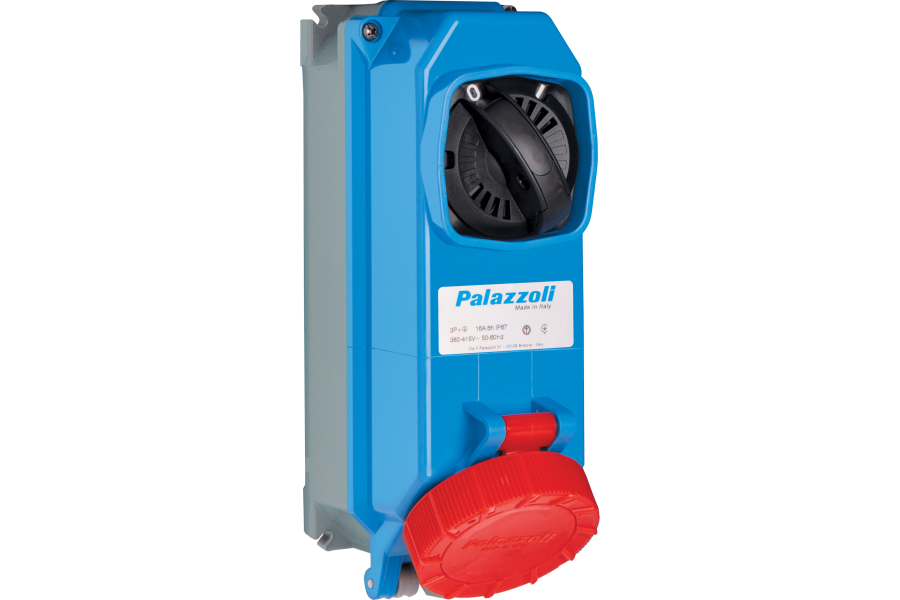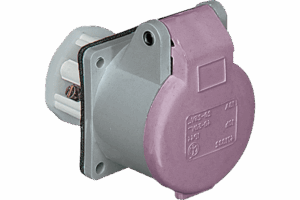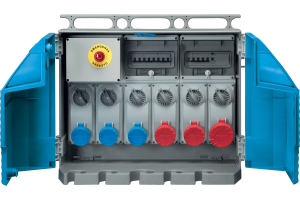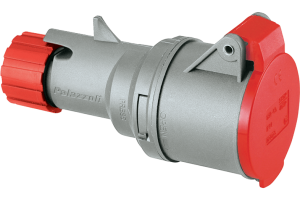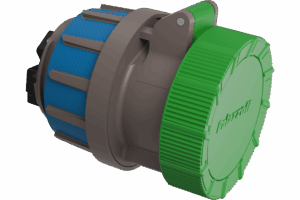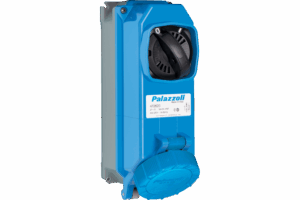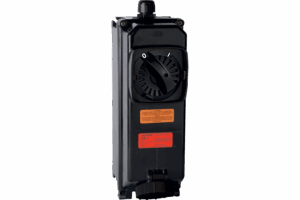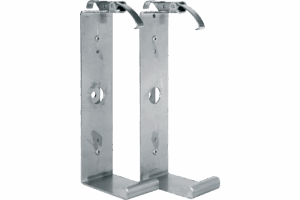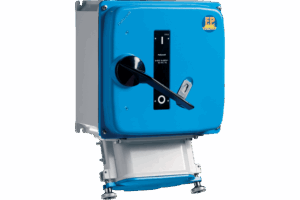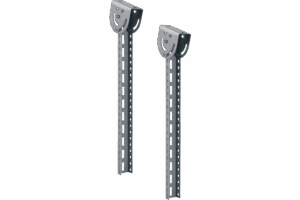Industrial Plug and Socket Market Overview The industrial plug and socket market is undergoing a significant transformation driven by the rising demand for robust electrical…
Industrial Plug and Socket Market Overview
The industrial plug and socket market is undergoing a significant transformation driven by the rising demand for robust electrical infrastructure across industrial and commercial sectors. Industrial plugs and industrial sockets are critical for ensuring safe and stable power delivery under demanding environmental conditions and operating voltages. Unlike conventional sockets or domestic sockets, industrial-grade systems are designed for rugged and high-vibration environments such as manufacturing plants, renewable energy sites, and construction phases.
With a wide range of socket solutions available, from mobile socket units to interlocked sockets and P17 bivalent socket formats, the socket industry continues to innovate. The market’s expansion includes specialized plug options like Palazzoli Industrial Wall Sockets, IP66/67-rated plugs, and thermoset modular wall sockets—all optimized for enhanced safety features and efficient socket wiring. As socket market growth continues globally, industrial power sockets are expected to dominate the landscape with increasing socket market share and demand for plugs across regions.
Market Growth Drivers
Increasing Industrialization
The industrial plug segment is seeing strong acceleration due to rapid industrialization in developing economies. As factories, logistics hubs, and smart manufacturing centers emerge, there is a rising need for reliable plugs and compliant plug systems. Robust plug and rubber plugs, capable of withstanding harsh conditions and difficult working conditions, are in high demand. These plugs must be compatible with the voltage range of advanced machinery and ensure earth contact compliance, especially in settings with high-speed contacts and rugged wiring layouts.
Demand for Reliable Electrical Connections
With safety and uptime being paramount, the demand for reliable electrical sockets and plug adaptors has grown. Industrial safety performance plugs offer robust safety features and quick wiring options, making them suitable for the harshest environments and civil socket applications. Socket solutions now emphasize protection degree (IP ratings), insulation voltage resilience, and compatibility with the maximum operating voltage expected in industrial environments. Users increasingly seek plug and socket combinations that deliver both technical purposes and long-term reliability—especially on construction sites and during early construction phases.
Adoption of Automation
Automation and digitization across industries are pushing the socket market forward. Machines and control systems demand stable voltage connections and plug setups that offer enhanced safety features and minimal installation downtime. Industrial sockets and plugs used in automation often include non-compatible socket lockouts, interlocked safety designs, and specialized plug types configured for programmable logic controllers. This segment also includes smart wall sockets that support wide voltage range configurations while adhering to strict insulation and environmental standards.
Expansion of Renewable Energy Projects
The rise of renewable energy projects has sparked increased socket demand, particularly for installations in harsh environments like wind farms and solar plants. These projects require robust plug and socket systems capable of handling combinations of voltage while offering a high degree of protection against dust, moisture, and UV exposure. Products such as the Italy Palazzoli Industrial Plug 730236 exemplify the focus on high-performance construction materials and socket market covering diverse renewable applications. As environmental conditions grow more variable, so does the need for plug systems designed for the industrial socket segment, with rugged construction and quick wiring in mind.
Key Market Challenges
Stringent Regulatory Requirements
Compliance with global and regional electrical safety standards poses a significant challenge in the industrial plug and socket segment. Regulatory bodies often require rigorous testing for insulation voltage, protection degree, and operating voltage combinations, particularly in products like IP66/67-rated plugs and specialized socket solutions. Inconsistent certification requirements across countries also lead to incompatibility issues, especially for non-compatible socket designs or customized mobile socket applications. This complexity increases production costs and slows down time-to-market for plug and socket manufacturers targeting diverse industrial environments.
High Initial Investment Needs
The shift toward advanced, high-performance plug systems such as interlocked sockets, robust plug variants, and civil socket alternatives demands significant upfront capital. Industrial environments require durable construction materials and enhanced safety features, often resulting in premium pricing. The creation of plugs with earth contact reliability, quick wiring support, and rugged housing capable of enduring harsh conditions adds to development costs. Small and mid-sized businesses may find it difficult to justify the financial conditions required to adopt compliant plug systems or to upgrade outdated electrical sockets to modern industrial safety performance plugs.
Regional Market Insights
United States Growth Scenario
The U.S. market continues to be a leader in socket market share, driven by high demand for reliable electrical sockets across manufacturing, energy, and construction sectors. Emphasis on efficient socket systems with robust safety features, combined with widespread adoption of automation, has fueled demand for Palazzoli plugs and compliant plug formats. Regulatory alignment with OSHA and NEMA standards promotes the use of industrial power sockets with high-speed contacts and a broad voltage range, supporting the growing need for socket demand in harshest environments.
China’s Market Potential
China represents a massive growth opportunity due to rapid industrialization, construction phase expansion, and investments in renewable energy. Demand for industrial plugs and plug adaptors suited to rugged and high-vibration environments is surging. Local manufacturers and global players alike are focused on producing robust plug designs that meet protection degree requirements and deliver maximum operating voltage in varied environmental conditions. China’s socket market growth is also being driven by national electrification goals and smart infrastructure upgrades across key industrial zones.
East Asia’s Emerging Influence
Beyond China, East Asia—including South Korea, Taiwan, and Japan—is becoming a hotspot for innovation in the socket industry. The regional push toward Industry 4.0 is increasing socket demand in automated factories and electronics manufacturing plants. Industrial socket solutions with advanced construction materials, insulation voltage consistency, and earth contact safety mechanisms are being rapidly adopted. These countries are investing heavily in IP-rated plugs and sockets for both indoor and outdoor applications, especially in data centers and tech parks where technical purposes demand uninterrupted and safe voltage connections.
North America’s Growth Rate
In North America, the industrial plug segment is forecasted to maintain a steady upward trajectory. Canada and Mexico are both investing in smart grid systems, green energy, and infrastructure modernization, contributing to an uptick in socket market covering various applications. The demand for wall sockets, P17 bivalent socket configurations, and industrial socket segment innovation is growing due to an increase in high-value industrial construction projects. IP66/67-rated plugs and socket solutions designed for quick wiring and enhanced safety features are at the forefront of regional product preference.
Product and Technology Trends
Popular Product Types
Industrial environments today rely on a wide range of plug and socket solutions to support demanding applications. Among the most popular product types are interlocked sockets, mobile socket units, and thermoset modular wall sockets, all designed for rugged use and ease of installation. The industrial plug segment also features plug adaptors, robust plug models, and Palazzoli plugs, known for their reliability in harsh conditions. These components are critical in maintaining continuous power flow across construction sites, renewable energy setups, and factory automation zones where quick wiring and voltage flexibility are required.
Preferred IP Ratings for Safety
When operating in harsh environments and rugged and high-vibration environments, safety is paramount. As a result, IP66/67-rated plugs and sockets have emerged as the industry standard. These ratings provide a high degree of protection against water, dust, and other environmental conditions—ideal for both indoor industrial settings and outdoor installations. Higher insulation voltage ratings and earth contact safety designs further reinforce user protection, especially in applications with maximum operating voltage variability. Such robust safety features are particularly valued in the construction phase and renewable energy operations.
Competitive Landscape
Key Market Segments
The industrial plug and socket market is segmented by product type, installation method, end-use industry, and geography. Notable segments include industrial power sockets for manufacturing, civil sockets for infrastructure projects, and electrical sockets for energy and grid deployments. The industrial socket segment leads in revenue due to its dominance in automated and high-capacity setups, while conventional sockets are gradually being phased out in favor of more specialized plug types like P17 bivalent socket formats and compliant plug systems that align with updated regulatory frameworks.
Notable Industry Stakeholders
Several global players are influencing socket market growth through innovation and regional expansion. Palazzoli stands out with its wide range of wall sockets, industrial plugs, and socket solutions for both harsh and standard environments. Other key stakeholders are investing in plug adaptors, high-speed contacts, and enhanced safety mechanisms designed for energy-efficient and high-voltage connections. These stakeholders are also driving development in efficient socket architecture, including support for automation interfaces and fast-connect technologies suited for international markets with diverse electrical standards.
Future Projections
Anticipated Market Value by 2034
By 2034, the industrial plug and socket market is projected to surpass a substantial valuation, driven by escalating socket demand across construction, logistics, renewable energy, and smart manufacturing. With increasing product complexity and expansion into developing regions, the value of the market will be influenced by advancements in construction materials, integration of digital diagnostics, and the adoption of modular, flexible plug systems.
Expected CAGR (Compound Annual Growth Rate)
Analysts forecast a steady CAGR, propelled by a rise in investments in infrastructure and automation across key regions. The demand for reliable plugs, industrial safety performance plugs, and systems offering high protection degree and voltage range flexibility is growing. This CAGR is expected to reflect the broader shift toward Industry 4.0 readiness, especially as legacy non-compatible socket types are replaced with smart, configurable alternatives designed for next-gen industrial environments.
Regional Opportunities and Investments
Significant growth is anticipated in East Asia, North America, and emerging regions in Africa and Latin America. Governments and private investors are focusing on electrification and grid stability, which is translating to large-scale procurement of IP66/67-rated plugs, industrial sockets, and compliant plug systems. Infrastructure spending on smart cities, EV charging stations, and industrial robotics is driving long-term socket market share increases. Meanwhile, established players like Palazzoli are positioning themselves to capture these regional investments by expanding product lines tailored for technical purposes and variable environmental conditions.
